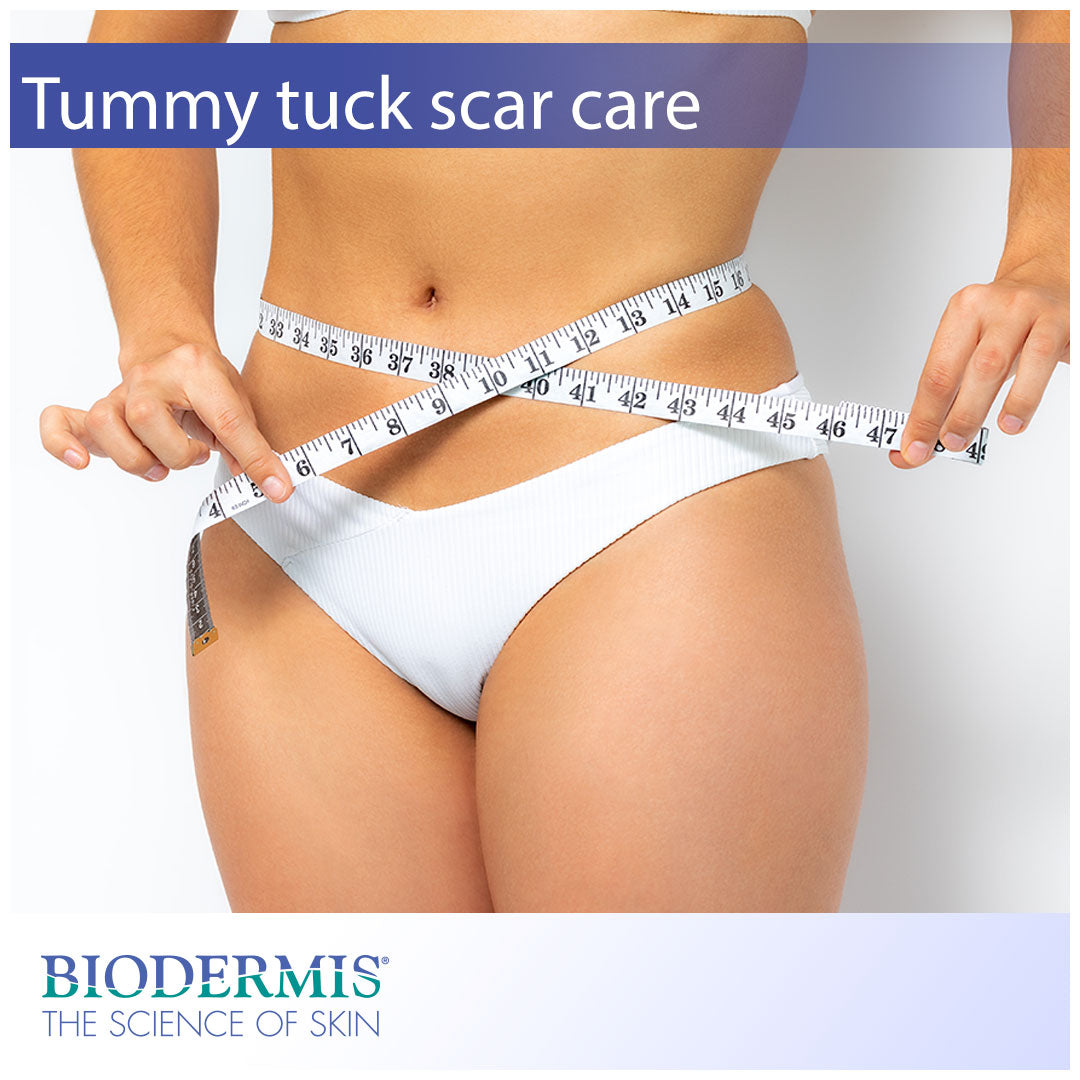A tummy tuck, known clinically as abdominoplasty, is a cosmetic procedure aimed at removing fat (subcutaneous) tissue from the middle and lower abdomen. Fat removal in these areas allows the surgeon to contour the shape of the body to create a firmer, tighter waist and midsection. Tummy tucks are one of the most common cosmetic procedure types for men and women who desire a leaner physique. Like any invasive procedure, noticeable scarring post-surgery is an inevitable result for most patients. Luckily, there are clinically-proven ways to reduce the appearance of all scar types, and products are easily attainable online.
Continue reading to learn more about tummy tucks and what you can do to treat post-surgical scars.
Three types of tummy tucks
There are three main types of tummy tucks: mini tummy tuck, complete or “full” tummy tuck, and extended tummy tuck. The mini tummy tuck is strictly a lower abdomen procedure designed to remove excess fat from the lower stomach region. Mini tummy tucks will leave a smaller incision scar than the other types. A complete or full tummy tuck addresses the upper and lower abdomen. This procedure will also help tighten the abdominal muscles caused by abdominal separation (diastasis recti) during childbirth. The extended tummy tuck targets the upper and lower abdomen in addition to the hip and thighs. This procedure is ideal for patients who have excess, sagging skin resulting from dramatic weight loss. Scarring from an extended tummy tuck will be greater than the other two procedures.
Post-operative recovery
Like any invasive surgical procedure, your doctor will recommend that you take things easy for at least several weeks after your tummy tuck. This means no heavy lifting, vigorous exercise, or other activities that could interfere with the wound healing process. It’s also a good idea not to consume alcohol or cigarettes while recovering, as these can also delay how quickly your body heals itself. Recovery periods will vary according to which tummy tuck procedure you had, with the more extensive procedures typically resulting in longer recovery times. Your surgeon may prompt you to wear a medical-grade compression foam, such as Epifoam, to assist in the recovery process.
Silicone gel treatment for scars
To address post-surgical scarring, silicone gel sheeting, sticks, or ointments should be applied to the scar site. Silicone gel technology emerged over 30 years ago as a prominent scar therapy solution for the reduction and prevention of abnormal scars. Numerous clinical studies support the efficacy of topical silicone for scar management, and it continues to be the surgeon and dermatologist recommended solution for scar care. Through the mechanisms of hydration and collagen regulation, medical silicone grants the user the ability to manage their scars to flatten and reduce their appearance. Medical silicone gel can be purchased through your physician or online at Biodermis.com.
Biodermis is an innovative market leader with 30 years of expertise in the medical silicone industry. Visit Biodermis.com today to explore a complete range of scar management and post-operative care solutions.
Biodermis offers custom tailored referral programs designed to simplify and reduce the cost of your patients' post-op care. Additionally, we offer professional pricing if you opt to retail our products. Give us a call at 800.322.3729, and we will be happy to provide additional details on these programs.





